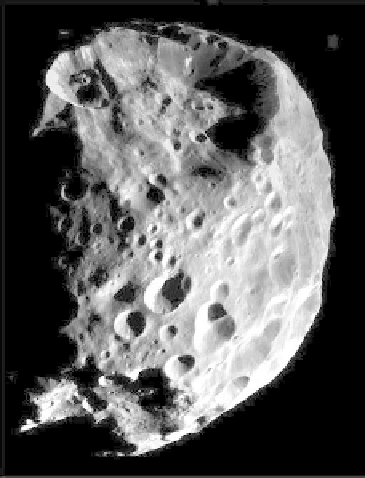Geoscience Reference
In-Depth Information
Fig. 4. A close-up view of the outer irregular Saturnian satellite, Phoebe, by the Imag-
ing science subsystem on the Cassini spacecraft.
Courtesy
: Jet Propulsion Laboratory,
NASA, and Space Science Institute.
as the SAPPORO spacecraft goes by. Considering the low-gravity environ-
ment and the rugged terrains of Phoebe, the deployment of a rover could
in fact be very challenging. An alternative approach is to use hoppers as
proposed previously for the study of the Martian moon, Phobos, by the
Russian Space Research Institute (IKI). A penetrator system similar to the
one designed by ISAS/JAXA for the SELENE mission to the Moon could
potentially be very valuable.
2.4.
The ring hopper/smasher
Many unsolved mysteries would probably be identified by the Cassini mis-
sion. A most probable one could be related to the internal structure of
the ring particles. How do the ring particles collide and evolve under the
influence of the planetary tidal force and mutual gravitational attraction?
How do the small and large bodies follow repeated cycles of coagulation
and breakup? And then how can we find the ground truth? An ideal-
ized approach would be to equip a long-wavelength radar system similar









